This is another of my experiments where I can answer a question that maybe we all ask ourselves! are all the leaves the same? With the naked eye we see most of the leaves of green color and with different textures, and well it seems easy to answer the question but in reality what happens if we put many leaves under a microscope to see their characteristics! And what do you think if we go even further and see a chloroplast? then let's not waste time and advance to knowledge!👨🏫👨🎓
Este é mais um dos meus experimentos onde posso responder a uma pergunta que talvez todos nós nos perguntamos! são todas as folhas iguais? A olho nu vemos a maior parte das folhas de cor verde e com diferentes texturas, e bem parece fácil responder à pergunta mas, na realidade, o que acontece se submetermos muitas folhas ao microscópio para ver as suas características! E o que você acha se formos ainda mais longe e vermos um cloroplasto? então não vamos perder tempo e avançar para o conhecimento!🔬🧫

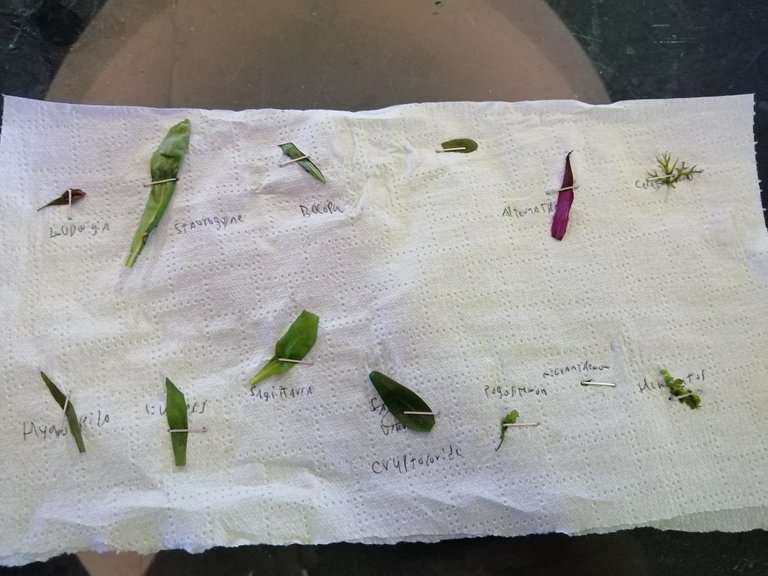
To do this post I took a sample of a leaf portion of 13 different aquatic plants with varied requirements! This means that we are going to analyze under the microscope leaves of plants with some requirements, that is, they need CO2 to carry out their physiological processes and other more resistant and simple ones that only require light to carry out photosynthesis! My idea is to evaluate which is the most suitable to see chloroplasts! When we search interent for chloroplast practices, ELODEA immediately appears! but why not create science and discover another plant to see chloroplast?🤩🤔😎😎😎😎😎😍😍🤔🤔🤔🤔🤔🤔🤔🤔
Para fazer este post, peguei uma amostra de uma porção da folha de 13 plantas aquáticas diferentes com requisitos variados! Isso significa que vamos analisar ao microscópio folhas de plantas com alguns requisitos, ou seja, precisam de CO2 para realizar seus processos fisiológicos e outros mais resistentes e simples que só precisam de luz para fazer a fotossíntese! Minha ideia é avaliar qual é o mais indicado para ver cloroplastos! Quando procuramos informações sobre as práticas de cloroplasto, ELODEA aparece imediatamente! mas por que não criar ciência e descobrir outra planta para ver o cloroplasto?😮😮
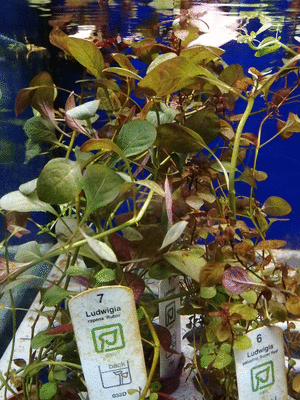
LUDWIGIA🧠👨🎓👨💻

This is a very varied genus of aquatic plants, approximately, more than 70 species have already been classified! Its distribution is classified as a cosmopolitan plant, this means that we can find it all over the world! it is normal to see it in tropical waters and the US apothecary association classified it as an invasive genus!😎🤔
Este é um gênero de plantas aquáticas muito variado, aproximadamente, mais de 70 espécies já foram classificadas! A sua distribuição é classificada como uma planta cosmopolita, o que significa que a podemos encontrar em todo o mundo! é normal vê-lo em águas tropicais e a associação farmacêutica dos Estados Unidos classificou-o como um gênero invasivo!💥💯

At first glance it has a rounded leaf and in the abaxial part it has a red coloration! It is a low-requirement plant to perform its physiology, sunlight is enough!🤔😮

Under the microscope we cannot differentiate any type of organelle! so I can rule it out for the chloroplast observation, it has a very greenish and dark color! apparently it has a very thick epidermis so it is resistant!😮😮😃😃😃😃😃😃😅😅😅😅😅😅😅
Sob o microscópio não podemos diferenciar nenhum tipo de organela! então posso descartar para a observação do cloroplasto, ele tem uma cor bem esverdeada e escura! aparentemente tem uma epiderme muito espessa, por isso é resistente!🤔🤔

STAUROGYNE🧠👨🎓👨💻
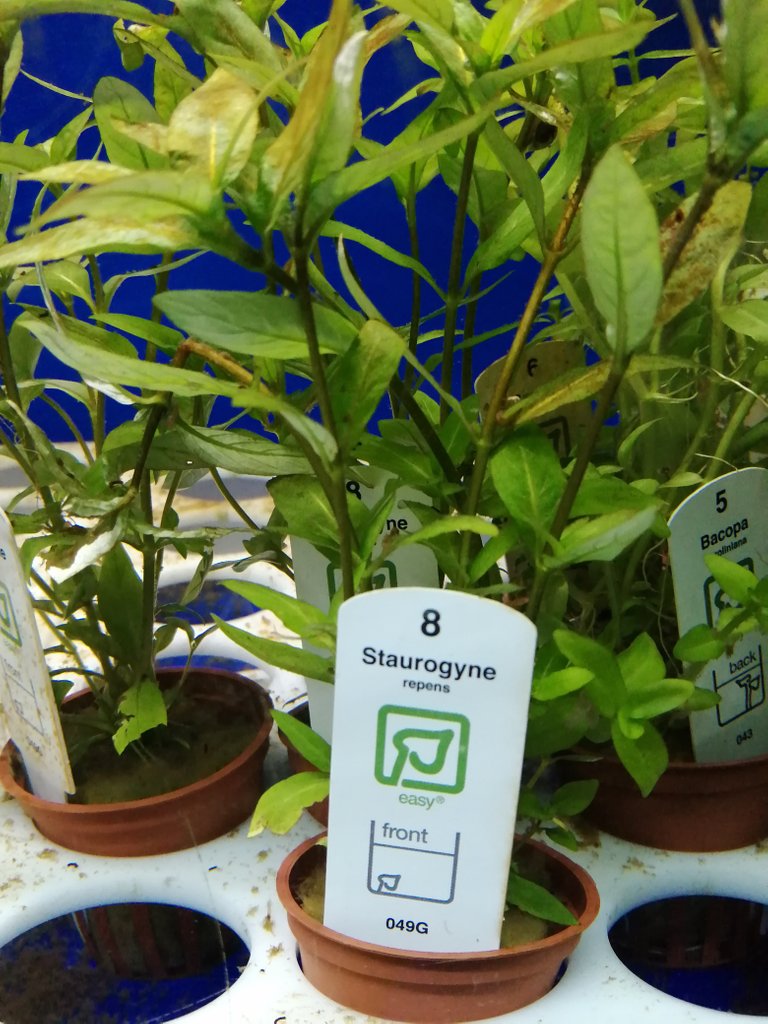
This is another genus of plant with high resistance and little sensitivity, very common in aquariums, it is a genus with more than 250 species, this plant is from tropical and subtropical countries so they are used for aquariums with heaters.😮😮
Este é outro gênero de planta com alta resistência e pouca sensibilidade, muito comum em aquários, é um gênero com mais de 250 espécies, esta planta é proveniente de países tropicais e subtropicais por isso são utilizadas para aquários com aquecedores.😉😉


At first glance we can see that it is a short-growing plant and that it has low environmental requirements to grow, its leaf is pointed and long! it is a plant that produces aquatic flowers!😁😁


This particular species caught my attention because it is much more transparent with a thinner cuticle that allows light to pass through and that is why we see it with a lighter green than the previous sample! We can see some lines that correspond to the ribs, although I made a view of more than 80x I could not see chloroplasts!😶😶🙂🙂🙂🙄🙄🙄🙄😣😣😣😣
Esta espécie em particular chamou a minha atenção porque é muito mais transparente com uma cutícula mais fina que permite a passagem da luz e é por isso que a vemos com um verde mais claro que a amostra anterior! Podemos ver algumas linhas que correspondem às costelas, embora eu tenha feito uma vista de mais de 80x não consegui ver os cloroplastos!😥

BACOPA MONNIERI🧠👨🎓👨💻

Already here we describe a specific species typical of Asian countries, it is also found in America! very common in wetlands and areas with swamps! It is a succulent with a thickened leaf that has many medicinal uses, in the aquarium it is very resistant and has a short growth!🤔😮
Já aqui descrevemos uma espécie específica típica de países asiáticos, ela também é encontrada na América! muito comum em zonas húmidas e áreas com pântanos! É uma suculenta com uma folha espessa que tem muitas utilizações medicinais, no aquário é muito resistente e tem um crescimento curto!😊😊

Its morphology is distinctive with very thick oval and rounded leaves! They are of low environmental requirement and only require sunlight to disburse.😃😃


A beautiful cut to which we can clearly differentiate the central nerve of the leaf and see how the ribs branch, if you do not know what the rib is for, it is the transport of the sap! Although it has a medium-thick cuticle, it still did not allow me to see chloroplasts!😋💚💚💚💚💚💚💚💚💚💚💚💚💚💚💚💚💚💚💚
Um belo corte para que possamos diferenciar claramente o nervo central da folha e ver como as costelas se ramificam, se você não sabe para que serve a costela é para transporte da seiva! Embora tenha uma cutícula de espessura média, ainda não me permitiu ver os cloroplastos!🧫🔬

ALTERNANTHERA🧠👨🎓👨💻

This beautiful red plant is one of my favorites, we are describing a herbaceous plant that is cosmopolitan too, and that many species are also invasive, about 300 species have been discovered!🤩🤩
Esta linda planta vermelha é uma das minhas preferidas, estamos descrevendo uma planta herbácea que é cosmopolita também, e que muitas espécies também são invasoras, cerca de 300 espécies foram descobertas!🧡🧡🧡

It is a very beautiful aquatic plant that I sell a lot in my store, but it has a defect ... It is very demanding and sensitive, it is a plant that has high requirements for its physiology, it requires CO2, temperature and light are essential for its growth. , which is slow and grows to a large size!😮
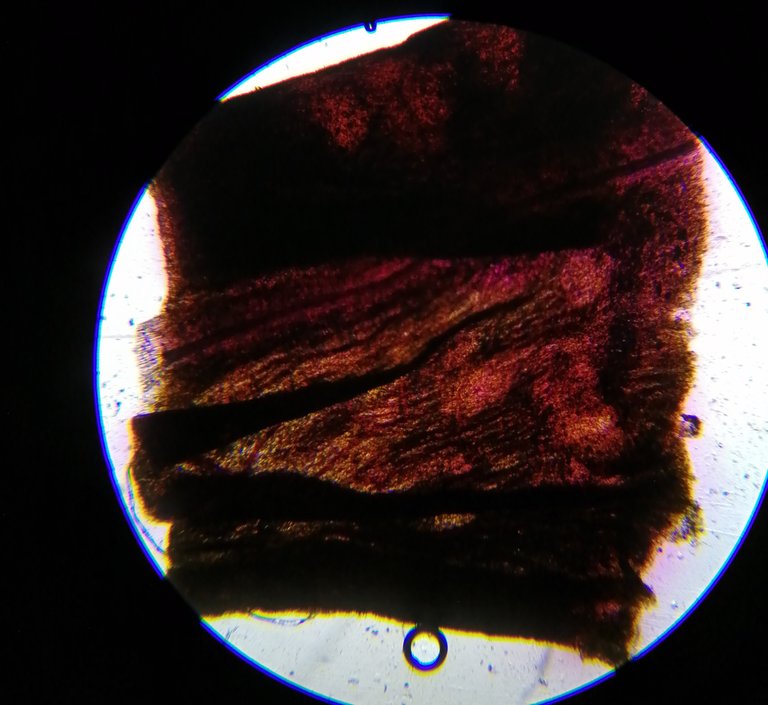

It was not easy to see it under the microscope, I think it was the one that gave me the most work! Despite being beautiful and different with a red coloration this is due to anthocyanin! that I noticed it in a lot of concentration because the light could not pass and I did not get a decent sample! it is obvious that here you could not distinguish the chloroplast!🧡🧡🧡💖💖
Não foi fácil ver ao microscópio, acho que foi o que mais me deu trabalho! Apesar de ser bonito e diferente com uma coloração vermelha isso se deve à antocianina! que notei com muita concentração porque a luz não passava e não obtive uma amostra decente! é óbvio que aqui não se conseguiu distinguir o cloroplasto!💥💥💥💥💥💥💥💥💥

CERATOPTERIS🧠👨🎓👨💻

Who would have thought that we would find a fern in the aquarium? Well yes ... This genus of plant has 3 species that are used in the aquarium is another plant that I sell a lot for its beautiful appearance, they are species from humid tropical countries!💥
Quem diria que encontraríamos uma samambaia no aquário? Pois é ... Esse gênero de planta tem 3 espécies que são usadas no aquário é outra planta que vendo muito pelo seu lindo aspecto, são espécies de países tropicais úmidos!🌿🍀
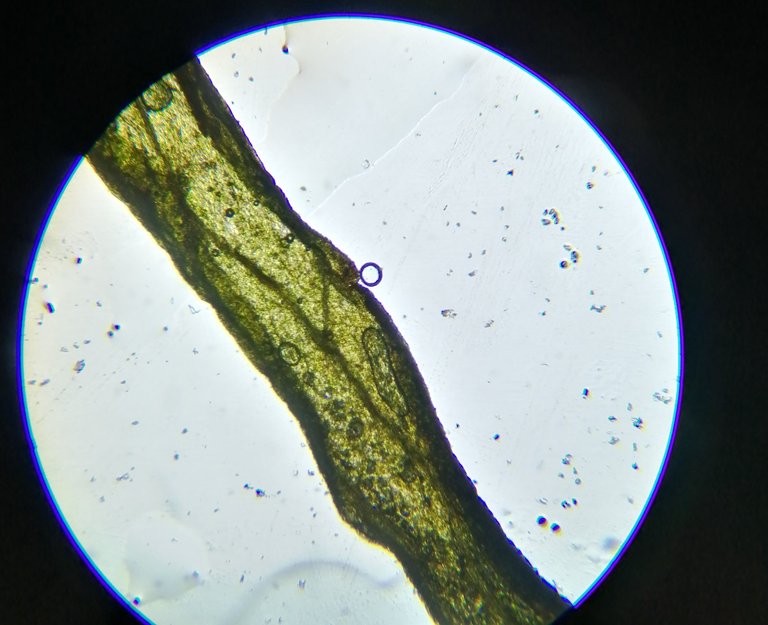

It is a leaf with an elongated appearance and not very thick, it has a thin cuticle that clearly lets light through, so it turns a light green, despite having a structure that is easy to see under the microscope, it was not possible to see chloroplasts!😍😍😍😍😎😎😎
É uma folha de aspecto alongado e pouco espessa, tem uma cutícula delgada que deixa passar claramente a luz, por isso torna-se verde claro, apesar de ter uma estrutura que é fácil de ver ao microscópio, não foi possível ver cloroplastos!🤔🤔🤔🤔

HYGROPHILA🧠👨🎓👨💻

We again come across a plant that produces beautiful flowers, there are more than 160 species, and the corymbosa species is one of the most used in aquariums, they are only distributed throughout the tropical countries of the world!😶😶
Novamente nos deparamos com uma planta que produz lindas flores, são mais de 160 espécies, e a espécie corimbosa é uma das mais utilizadas em aquários, só se distribuem nos países tropicais do mundo!🚩🌏🌎

It is a plant with large leaves and has a medium-slow growth, it grows very tall and is widely used in aquariums to decorate the bottom and corners of aquariums!🌿🌿

Immediately this sheet caught my attention because I saw some structures through the sheet, and of course I HAVE GOT CHLOROPLASTS! my research was successful and it is that the genus of HYGROPHILA is indicated to see chloroplasts!😮😮😮🧡
Imediatamente esta folha chamou minha atenção porque vi algumas estruturas através da folha, e é claro TENHO CLOROPLASTOS! minha pesquisa deu certo e é que o gênero HYGROPHILA é indicado para ver cloroplastos!🔬🥇🏆



Since we write about science then we are going to explain to you what chloroplasts are, basically they are organelles that we can find in photosynthetic organisms, and as their name describes it, they perform photosynthesis in plants!😮💥🌞


LILAECOPSIS🧠👨🎓👨💻



This plant is located in the genus of apiaceae, let's say it is a herbaceous with thick leaves that has a fast growth and are very short, which makes them one of the most sought after to decorate the front part of aquariums! At the microscope level it is very beautiful to see but with a thick cuticle it does not allow the passage of light!🤔😮👨🏫👩🏫👨🎓👨🏫👩🎓🕵️♂️
Esta planta situa-se no género das apiaceae, digamos que é uma herbácea de folhas grossas que tem um crescimento rápido e são muito curtas, o que a torna uma das mais procuradas para decorar a parte frontal de aquários! Ao nível do microscópio é muito bonito de ver, mas com uma cutícula grossa não permite a passagem da luz!😁😁

SAGITTARIA🧠👨🎓👨💻



We move on to this beautiful genus that has about 20 species of aquatic plants and that are also commonly used in aquariums, they have low requirements, enough sunlight to grow, elongated and thin leaves, we can see in the microscope that it has a very fine cuticle and the light passes easily on both sides (abaxial and adaxial), despite its thickness I cannot see organelles🤔🤩🌞💥🤔🕵️♂️👨🏫😁😁🌿
Passamos para este belo gênero que possui cerca de 20 espécies de plantas aquáticas e que também são comumente utilizadas em aquários, têm baixas necessidades, luz solar suficiente para crescer, folhas alongadas e finas, podemos ver no microscópio que tem uma grande cutícula fina e a luz passa facilmente dos dois lados (abaxial e adaxial), apesar de sua espessura não consigo ver organelas😮🤨

CRYPTOCORYNE🧠👨🎓👨💻



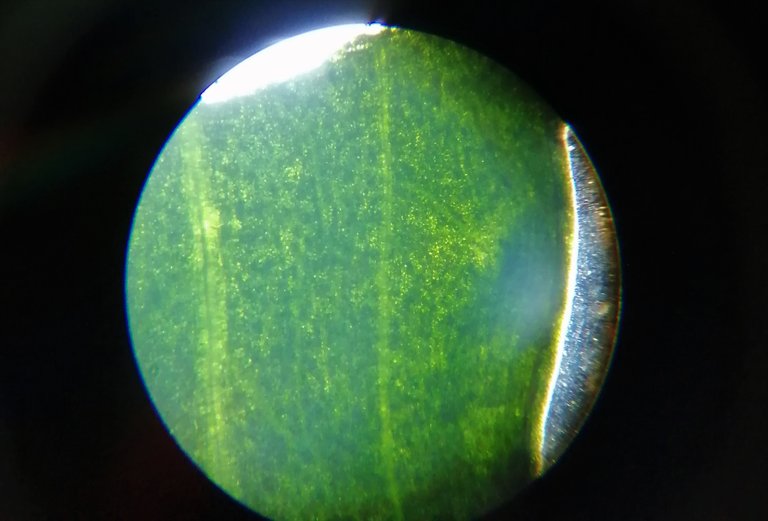
This genus has more than 50 species, many aquatic, very frequented in the aquarium, it has a low requirement, it is enough to provide light to grow, it has a medium-high growth, they are native to Asia! its blade is very thick, long and pointed! I think that for me it is the sheet with the thickest cuticle that I have seen so far! In the micro there is not much to aim as you can see the light does not pass through the blade easily!😁🤩😮🧡🙂💚💚💚
Este gênero possui mais de 50 espécies, muitas aquáticas, muito freqüentadas no aquário, tem baixa exigência, basta fornecer luz para crescer, tem um crescimento médio-alto, são nativas da Ásia! sua lâmina é muito grossa, longa e pontiaguda! Acho que pra mim é o lençol com a cutícula mais grossa que já vi! No micro não há muito o que mirar pois dá para ver que a luz não passa facilmente pela lâmina!🧫💖🧫😁😁🌿🌿🌿

POGOSTEMON🧠👨🎓👨💻


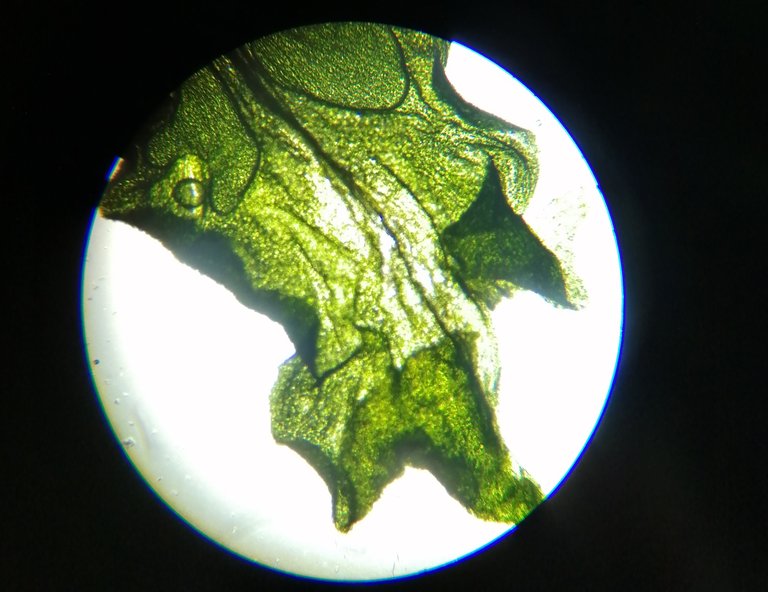
It is not easy to search for information on this genus despite being very broad, the leaves are particular because they are elongated and have small tips, they have a greater distribution from tropical countries to Africa, it is little frequented in aquariums due to its high level of sensitivity, They are not easy to maintain, they have high requirements, in the microscope the light passes easily and as expected of a sensitive species the cuticle is fine and the light passes very easily😶😮🌿💚🧫🕵️♂️👨🏫🤩🙂🌞💥🤔🧡🕵️♂️😮😮😮😮😮
Não é fácil buscar informações sobre este gênero apesar de ser muito amplo, as folhas são particulares por serem alongadas e com pontas pequenas, têm maior distribuição desde países tropicais até a África, é pouco freqüentado em aquários devido ao seu alto. nível de sensibilidade, eles não são fáceis de manter, eles têm requisitos elevados, no microscópio a luz passa facilmente e como esperado de uma espécie sensível a cutícula é fina e a luz passa muito facilmente🌿😶😁

MICRANTHEMUM🧠👨🎓👨💻



There is not much information on the internet about this genus of flowering plants that are very pretty and with very small leaves, they have about 29 species, the leaf is very small as well as the plant has a fast growth but it will require many conditions for its physiology works perfectly so it is very demanding! Many times they are used in the aquarium to decorate the aquarium floor but it needs CO2 daily to live!😃🔬💚🌿🧫👨🏫🤩🙂🌞💖🚩👨🎓👩🏫👩🎓🥇🏆😁💥🤔
Não há muita informação na internet sobre este gênero de plantas com flores que são muito bonitas e com folhas muito pequenas, elas têm cerca de 29 espécies, a folha é muito pequena assim como a planta tem um crescimento rápido mas vai exigir muitas condições pois a sua fisiologia funciona perfeitamente por isso é muito exigente! Muitas vezes são usados no aquário para decorar o chão do aquário, mas precisa de CO2 diariamente para viver!😃😃

HEMIANTHUS🧠👨🎓👨💻

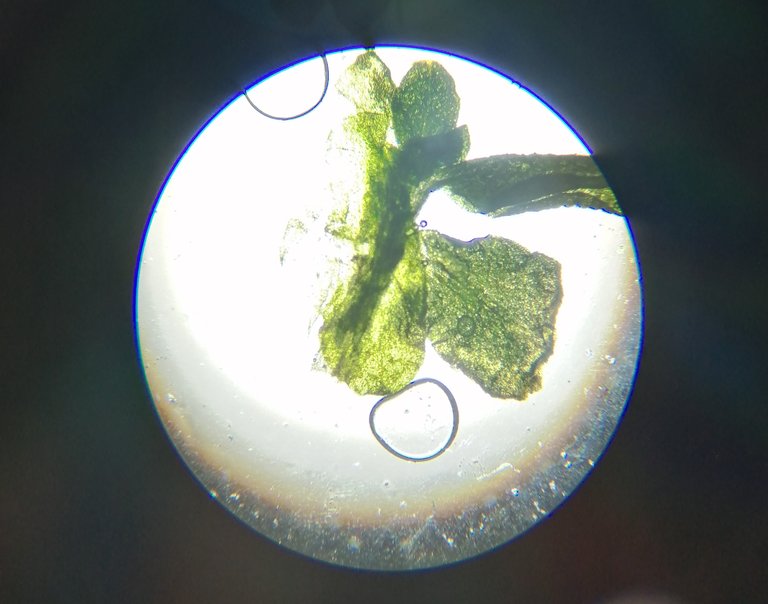
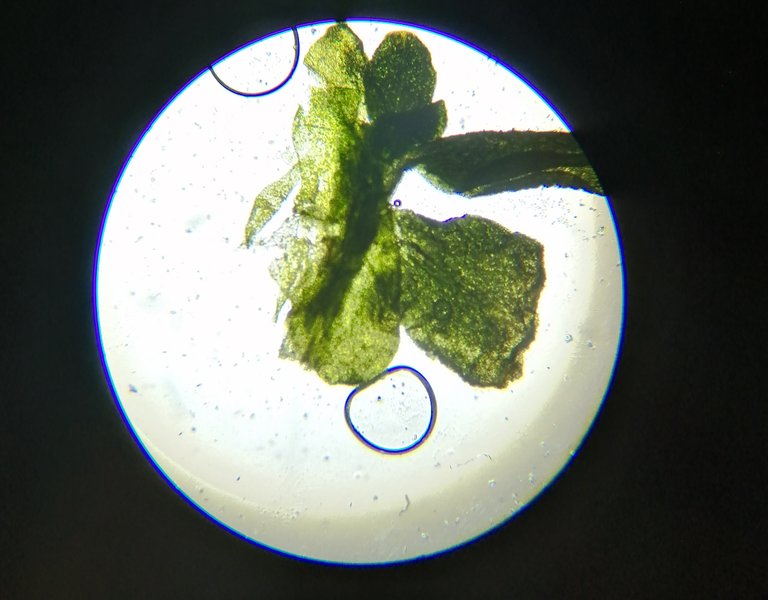

In my opinion, the most difficult aquatic plant to maintain, it is only used by an aquarium expert, due to its high level of demand, it is a specific plant from India, very small leaves as well as its growth, in the microscope despite having a medium-gross cuticle light passes moderately but we cannot see structures! we should make a very fine cut!👩🏫👩🎓🏆😁
Na minha opinião, a planta aquática mais difícil de manter, só é usada por um aquarista, devido ao seu alto nível de demanda, é uma planta específica da Índia, com folhas muito pequenas assim como seu crescimento, ao microscópio apesar tendo uma cutícula média-grossa, a luz passa moderadamente, mas não podemos ver as estruturas! devemos fazer um corte muito fino!🌏😃👨🏫

WHAT I LEARNED TODAY!!🧠👨🎓👨💻


My experiment despite being exhausting because I had to see each leaf in several magnifications to observe the chloroplast, I discovered that not only is helodea a good leaf to see chloroplasts, the genus HYGROPHILA can also be used to see photosynthetic organelles! because they are visible on the blade without making very fine cuts! I also learned that plants with HIGH requirements have a fine cuticle unlike the most resistant ones such as (bacopa) !! I hope you learned something today!🙂🌞💖😁🔬😮
Meu experimento apesar de ser exaustivo porque tive que ver cada folha em várias ampliações para observar o cloroplasto, descobri que não só helodea uma boa folha para ver cloroplastos, o gênero HYGROPHILA também pode ser usado para ver organelas fotossintéticas! porque são visíveis na lâmina sem fazer cortes muito finos! Também aprendi que plantas com requisitos ALTOS têm cutícula fina ao contrário das mais resistentes como (bacopa) !! Espero que você tenha aprendido algo hoje!🔬🔬🔬😮🌿

DNA is an organization to foster and DENSIFY NATURE-APPRECIATION which aims to establish REPORTS OF BIODIVERSITY DATA that is contributed by all of us Hiveans and subsequently cataloged.
Therefore DNA searches for HIGH-QUALITY posts that aim to DESCRIBE and determine the BIODIVERSITY AROUND YOU with added EXPLANATIONS and INFORMATION. For these informative posts they offer a CURATION SERVICE using the @dna.org account. It is also a CURATION TRAIL. Just add the #dna TAG if you think that any of your posts is what they are looking for.


THANKS FOR READING ME🙂, PHOTOS OF MY PROPERTY🧠🦾👍 (The information shown here is from my authority, I am an expert in aquariums, there are no direct quotes and the supplemented information was extracted from WIKIPEDIA, ONLY to see the number of species of each genus !!!)
BYEEE!!!! / UM GOSTOOO!!!🙋♂️👍


































































What do you mean by 'plants with high requirements'? I mean, different plant species have specific features that enable them to adapt to their respective habitats. To some, it could very thin cuticle, while it could be thick cuticles for others. Some plants have their chloroplasts located deep in the spongy mesophyll instead of the normal palisade mesophyll.
In aquarium we have 3 classifications for plant requirements, easy maintenance, medium maintenance, difficult maintenance! A plant with high demands requires daily pumping of CO2, the levels of pH, carbonates and light are very specific so as not to die! It is how we explain to customers before buying an aquatic plant! You are right, you have a good knowledge of botany, everyone asks to see chloroplasts with helodea but we forget (hygropghila) that it is also perfect to see them with the naked eye, in helodea we must cut a very fine portion of the leaf! Hugs!
Ok. Now I understand. I have got two degrees in Botany :)
Super cool! I'm not a fan of botany, my master's degree was in animal ecology but it's fun to see leaves under a microscope. I was excited when I saw the chloroplasts xD! I have a friend from my faculty who created a food supplement for fish with cyanobacteria! How's it going? They were balls with a high level of protein
hieew all these experiments.
Interesting!
:D
Thanks for your contribution to the STEMsocial community. Feel free to join us on discord to get to know the rest of us!
Please consider supporting our funding proposal, approving our witness (@stem.witness) or delegating to the @stemsocial account (for some ROI).
Please consider using the STEMsocial app
app and including @stemsocial as a beneficiary to get a stronger support.
I would go to work at your shop. lol.
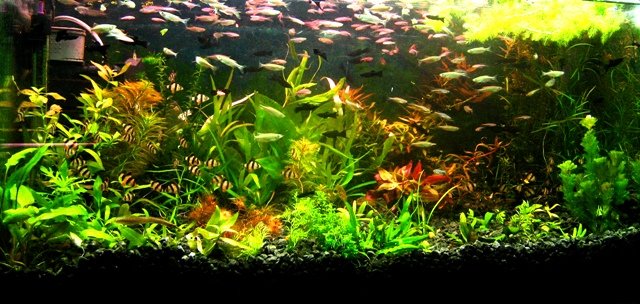


My advice for distorting plants before selling is that companies that supply aquarium plants do not grow them in aquariums, but hydroponically, dry. Very often, plants lose their presentation due to the fact that they are placed immediately in an aquarium filled with water. They need to be converted into a water form by gradually increasing the water level, and a fog generator is needed.
If it is good advice, although we are not the main supplier, we resell and believe me the plants here do not take 3 days to be sold xD, and you think a problem is that when we put them in aquariums they sometimes come out with snails or eggs and It is very annoying, I have so many doubts with your aquarium, for example, there are 3 aquariums, isn't it just one? I see that you have some red ones and you need c02 for those aquariums that I suppose must have 100lts. How many bubbles do you pump a day of c02?
) it was in 2006, the number of bubbles is calculated from the volume of the aquarium and the power of the luminous flux, there is a formula for this.
The third photo shows an aquarium of 100 liters, a metal halide lamp of 150 W and 4500K.
There was installed a carbon dioxide generator CERA, on tablets.
The first photo shows an aquarium of 240 liters, it was at the start, the supply of carbon dioxide, if my memory serves me, is 10-15 bubbles per minute.
Light 6 lamps of 40W Sera-Plant, different spectrum and light output.
I did not focus on the measurements of the pH, I everywhere added a supplement from blue clay and acidified the water with peat extract, our water is hard, it is difficult to peroxidize it.
I did everything intuitively, observing the state of the plants. If the plants actively emitted oxygen and brown algae and filamentous did not appear on their leaves, then they were fine.
An excellent indicator of the state of water is the underwater form of ricia, which I converted into an underwater form, if it is good, then other plants will be fine.
In an aquarium with scalars, 260 liters, only light 2x150 W, metal halide and fertilizers without carbon dioxide supply.